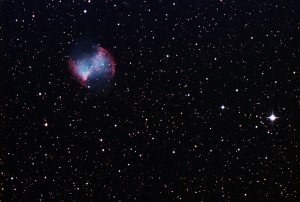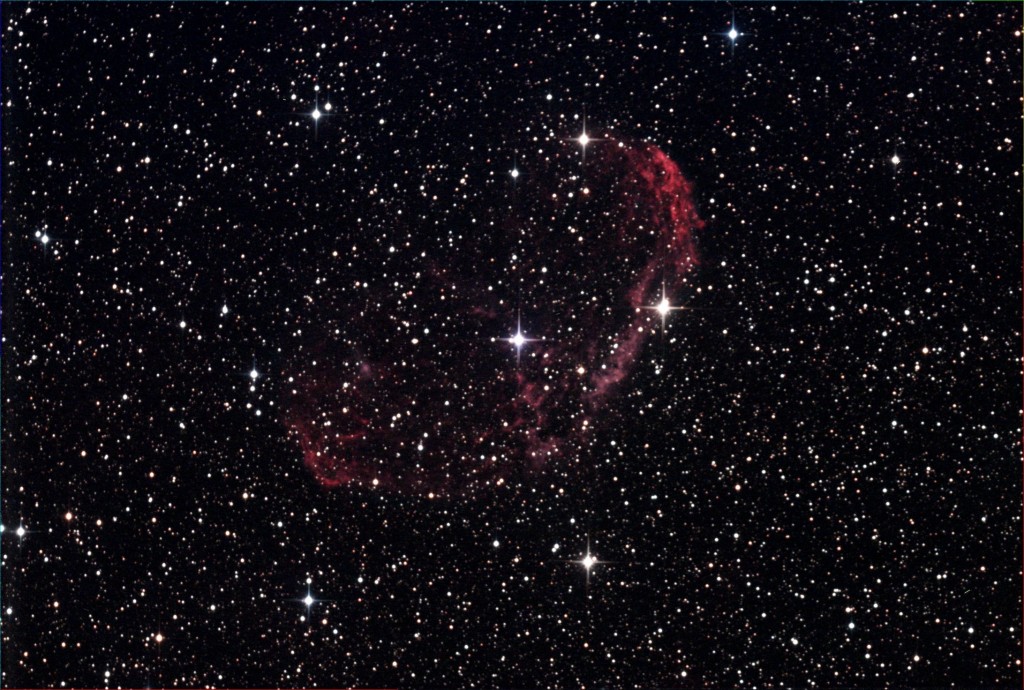Saturday night the impending full moon pretty much drowned out any dim object imaging. But Vulpeula’s Dumbbell Nebula is not a dim object. Several sources state that this is a binocular object. The recorded magnitude of 7.5 implies it is, but I have not tried to see it with my binoculars.
”] This is the first planetary nebula listed in Messrs. Messier’s famous list of not-comets and one of only four. If you concentrate on the reddish portion of the nebula you will see the pinched shape that gave rise to the common name.
This is the first planetary nebula listed in Messrs. Messier’s famous list of not-comets and one of only four. If you concentrate on the reddish portion of the nebula you will see the pinched shape that gave rise to the common name.
This is my first attempt at imaging M27. Right now the nebula is almost directly overhead and I had to limit my color exposure count to finish before the telescope struck the pier. Even so, I was still able to get an hour of exposures. As usual North is to the right and East is up.
